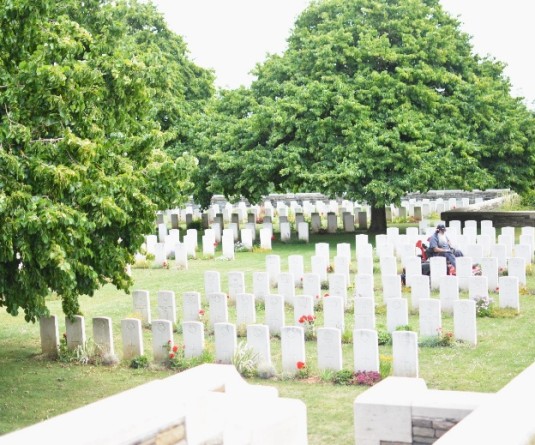
Of all the ancient sites excavated and revealed by archeologists, the one that has fascinated me the most is the city of Ephesus. This ancient city of Ephesus is interesting and fascinating not just because of the historical and archeological accounts but because of its biblical connotations. The Apostle Paul wrote one of his letters to the people of Ephesus and this letter came to be known as the ‘Ephesians’.
In ancient times, Ephesus was the most important city in western Asia Minor (now Turkey). It became a commercial centre because it was at an intersection of major trade routes. It also became well-known because it boasted a magnificent pagan temple dedicated to the Roman goddess Diana (Greek name Artemis).
In olden times when there were no railways or airways, port cities which could harbor ships were the centers of many activities and they grew into big commercial centers. Ephesus was also one such city which was strategically located near the sea and which had the capacity to harbor even the biggest of ships. As it was a commercial center, the people living there were rich and well-of. It was situated in Asia Minor (now Turkey) at a distance of about 35 miles to the south-east of Smyrna. Ephesus was indeed a very strategically located and important port city and it boasted of some very magnificent public buildings like gymnasiums, stadiums and public bathrooms as well. Moreover the gate called the ‘Victory Gate’ built during 3 B.C. was also located in the city of Ephesus. And the Artemis temple which was also located in Ephesus was so grand and magnificent that it was counted as one of the Seven Wonders of the World during that time.
However, as time passed on, river sands from the river Cayster slowly flowed down and covered the city of Ephesus and thereby the port of Ephesus slowly disappeared from the map of western Asia Minor (now Turkey). In this way many areas in this region were erased by the river sands and had to be evacuated. It is not at all an easy job for archeologists to dig ancient sites and make discoveries. However, in the case of Ephesus, the archeologists did not face much hardship as they only had to deal with sands and not hard soil or rock.
It was some archeologists from Australia and Turkey who together carried out excavations in the region of western Asia Minor and found out that Ephesus was indeed a very important ancient city. Some of the noticeable findings made by this group of archeologists were:
1) They discovered the Artemis temple. This temple was destroyed by the Goths in the year 262 A.D. But even the remains of the temple were treated as holy shrine by the people for over 1200 years.
2) These archeologists also discovered some other temples which were built during the glory days of the Romans. This was so because Ephesus was a city where many religions existed side by side. And amongst these discovered temples, the temple of the Egyptian God Serapis was also one.
3) They also discovered a big stadium which had a sitting capacity for 25000 men. In Acts 19:29, it is mentioned that Gaius and Aristarchus (Paul’s traveling companions from Macedonia) were dragged to a stadium by the angry mob. And scholars believe that this stadium was probably the same one where Gaius and Aristarchus were dragged into.
4) Two public places called Aroga where people could go and spend their leisure time were also discovered.
5) The Celsus House built during the period 115 – 125 A.D. was also discovered.
6) Besides, gymnasiums, dress-changing rooms, swimming pools, bathrooms (with facilities for cold and warm water), massage rooms etc were also discovered.
7) Many houses belonging to the common people were also discovered. The houses of the rich and wealthy had separate kitchens, bedrooms and bathrooms.
8) A house which was built before the times of the New Testament was also discovered. This was the house where the Apostle John stayed when he was in Ephesus for two years. The Apostle John died in Ephesus and it is said that the church of Ephesus was built over the grave of John.
There are no records which mention about the exact population of Ephesus but it is clear that Ephesus was a city where people from different parts of the world came and lived. Even for the disciples of Jesus, Ephesus was a centre for their works of evangelism. In fact, it is even said that Mary (the mother of Jesus) breathed her last at Ephesus. The archeologists who carried out excavations at the site of Ephesus were extremely elated because they were successful in bringing out many important accounts and stories of the Ephesus city.
The Records also say that the Apostle Paul visited Ephesus twice and in the second visit, Paul stayed at this city for about three years. In the later times, the church of Ephesus was entrusted to Timothy.
In the second chapter of the Book of Revelation (the last book of the New Testament), the Apostle John wrote letters to the seven churches and amongst these letters, the one which he wrote to the citizens of Ephesus was the first. The letter which Paul wrote to the Ephesians may also be just one of the many letters which he wrote to the churches. But it is undeniable that the church of Ephesus had a special significance for Paul as well.
It is also said that this letter to the Ephesians was probably not sent merely to the church at Ephesus but also to the various churches in the province of Asia, where Paul conducted his third missionary journey. And most scholars believe that Paul wrote this letter about A.D. 60 during his two year imprisonment in Rome. Neither the Bible nor any of the historical accounts mentions how and when exactly the Apostle Paul died. But it is widely believed that he was beheaded in Rome during the reign of Nero around the mid 60’s A.D. This means that this letter to the Ephesians was written by Paul about 5 years before his death.
Unlike several of Paul’s other letters, Ephesians does not address any particular error or heresy. Paul wrote so that his readers might better understand the dimensions of God’s eternal purpose and grace and come to appreciate the high goals God has for the church.
One of Paul’s themes is that of unity that all Christians are one family in Jesus and they should act with love toward each other. He also writes about the church – not a church building, but the church that is made up of all Christians throughout the ages.
And if one is to point out the most widely read and familiar verse from the book of Ephesians, it would certainly be Ephesians 6:1 which we all read as kids in our Sunday classes and at our schools:
“Children, obey your parents in the Lord, for this is right”…..





